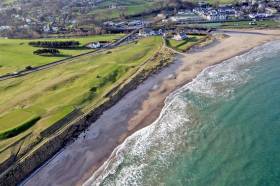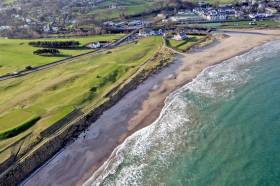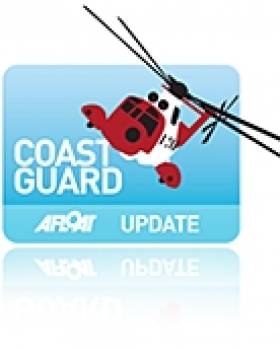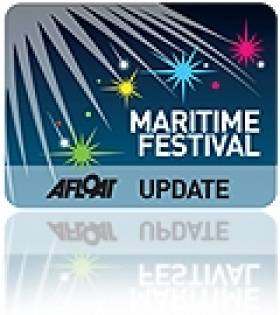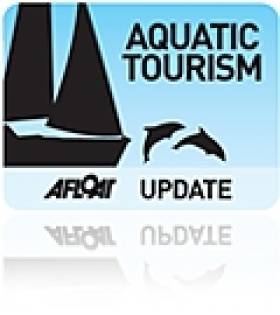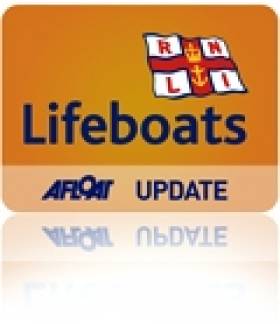Displaying items by tag: Ballycastle
Ballycastle, Northern Ireland, is all set to host a leg of the Red Bull Cliff Diving World Series 2024. This July, the global event will witness the world’s best cliff divers competing against each other on the beautiful Causeway Coast. This will be the first time Northern Ireland will host such an event, and it's going to be a spectacular one.
The event, which is free for the public, will take place on the fourth stop of the series. Ballycastle, situated within the Glens of Antrim, is an area of outstanding natural beauty. The choppy Atlantic waters of Ballycastle will prove to be a danger and a delight for the divers competing. The beautiful backdrop of the Causeway Coast will only add to the charm of the event.
The mid-season point of the series, this stop will test the divers' limits as they contend with challenging conditions, including fearsome winds. The roster of 24 male and female divers will dive and twist through the air from heights of up to 27 meters, plunging into the cold Atlantic at over 85 kmph.
As Afloat previously reported, The event is expected to attract tens of thousands of people, all hoping to witness a spectacle like no other. The competition will get underway at 4 pm on both days, and it's sure to be an unforgettable experience for everyone.
Previous stops of Red Bull's iconic World Series on these shores were held at the famous Serpent’s Lair in Inis Mór, and Dublin hosted the event for the first time in 2019 with a record-breaking attendance in Dún Laoghaire. The series headed back West to the cliffs of Downpatrick Head on its last stop in Ireland in 2021.
The reigning champions, Rhiannan Iffland from Australia and Constantin Popovici from Romania, will be the ones to watch out for. However, as this is the 15th season of the Red Bull Cliff Diving World Series, there are sure to be plenty of thrills and spills throughout the season as the divers battle it out to claim the coveted King Kahekili Trophy.
The full calendar of the 2024 Red Bull Cliff Diving World Series is as follows: Athens, Greece - May 26th, Boston, USA - June 8th, Polignano a Mare, Italy - June 30th, Ballycastle, Northern Ireland - July 19th & 20th, Oslo, Norway - August 10th, Canada - August 25th, Antalya, Turkey - September 29th, and Sydney, Australia - November 10th.
Ballycastle Coastguard Launches to Reports of ‘Dolphin Harassment’ Off North Antrim Coast
Ballycastle Coastguard joined officials from Northern Ireland’s Department of Agriculture, Environment and Rural Affairs (DAERA) in responding to reports of dolphins being potentially harassed by personal water craft and other leisure vessels.
The teams launched on Sunday afternoon (25 July) to the waters off Ballycastle beach in north Co Antrim, where “a conversation was had with several PWC users and they were asked to return to Ballycastle Harbour”, a coastguard spokesperson said.
“At the harbour advice was given on the legal protection of these marine mammals, and how to legally operate in their presence.
“After the area was cleared of PWC and pleasure craft the dolphins were observed to swim freely west and re-aggregetae into their pod.”
The coastguard said noise from leisure vessels “causes distress to these social mammals as they cannot communicate acoustically with their pod”.
It also emphasises that a conviction for wildlife disturbance under the NI Wildlife Order comes with the potential of a heavy fine or even jail.
“These are also large animals and have the potential to capsize vessels or cause injury,” it added.
Rip Current Possible Cause Of North Coast Drowning Tragedy
A sudden and violent rip current may have been the cause of a tragedy at a Northern Ireland beach in which one woman drowned, an expert has said.
Two women, part of a group of experienced cold water sea swimmers, got into difficulty off Ballycastle on the North Coast in Co Antrim yesterday morning (Monday 9 December).
One of the women died in the incident, and was later named as local community midwife Deirdre McShane. The other was taken to Causeway Hospital in Coleraine with suspected hypothermia.
Speaking to the Belfast Telegraph, physiology expert Professor Mike Tipton of the University of Portsmouth suggested that experienced cold water swimmers are unlikely to put themselves in danger — meaning that a sudden rip current could have taken the two victims by surprise.
The Belfast Telegraph has more on the story HERE.
Wartime Mine Washes Up On Ballycastle Beach
#Alert - Ballycastle was put on alert yesterday afternoon (Saturday 16 September) as a Second World War-era mine washed up on the Co Antrim beach, according to the Belfast Telegraph.
British Army technical officers performed a controlled explosion of the device, presumed to be one of many that were laid on the North Coast around the entrance to nearby Lough Foyle to protect Allied shipping during the war.
Northern Ireland Cliff Fall Child Is Named
#Ballycastle - The child who died after he was round at the bottom of sea cliffs near Ballycastle in Co Antrim last night has been named as Logan Crawford.
BBC News reports that the seven-year-old boy was local to the area, and was believed to have been playing with friends near the cliff edge when he fell.
As previously reported on Afloat.ie, Belfast Coastguard and RNLI lifeboats from Portrush and Red Bay were involved in the search for the boy, who was airlifted to Coleraine Hospital by RAF helicopter but later pronounced dead.
Coast Guard Finds Child at Base of Cliff
#coastguard – Belfast Coastguard coordinated the search yesterday evening for a child who was missing near cliffs close to the Silvercliff Caravan Park at Ballycastle.
The Ballycastle and Coleraine Coastguard Rescue Teams, a Police helicopter, the rescue helicopter from RAF Prestwick and the Portrush and Red Bay RNLI lifeboats all searched for the missing child after Belfast Coastguard received reports that the child was missing.
The child was found at the base of the cliffs and has been taken by the RAF helicopter to Coleraine Hospital.
RNLI add:
RNLI lifeboats from Portrush and Red Bay involved in search for child in Ballycastle
Two volunteer lifeboat crews were involved last night in the search for a child who was missing near cliffs at Ballycastle, County Antrim.
The RNLI lifeboats from Portrush and Red Bay were launched at 7.20pm last night (15 June) and once on scene commenced an intensive search along the coast and in the Ballycastle area.
The child was found at the base of the cliffs and was taken by the RAF helicopter to Coleraine Hospital.
Sadly it has been announced that the child has died and the RNLI lifeboat volunteers at both Red Bay and Portrush wish to offer their deepest sympathies to the family.
Friday 10th May saw the launch of the Rathlin Sound Maritime Festival, set to be one of the highlight events of the summer, beginning later this month on 24 May. The launch event was held at Portnagree House Harbour & Marina Visitor Centre in Ballycastle, the building that is home to the Harbour Master's office and the Visitor Information Centre and offers impressive facilities for both visitors and locals. The launch event was organised and hosted by Caroline Carey, Acting Tourism Development Manager for Moyle District Council and John Morton, Harbour Master for Moyle District Council, both part of the Festival steering group.
Moyle District Council Chairman Cllr Sandra Hunter welcomed everyone to the launch event and paid tribute to the work of the Festival steering group and all the organisations involved for their efforts to put together such an exciting programme of activities throughout the Festival dates of 24 May to 02 June 2013. The Festival has been organised by a team comprising Moyle District Council tourism and marina staff, Rathlin Development and Community Association, Ballycastle Community Development Group and Ballycastle Chamber of Commerce. Michael Cecil, Chair of Rathlin Development and Community Association, Paul Kerrigan Chair of the Ballycastle Community Development Group and Mary O'Driscoll, Chair of Ballycastle Chamber of Commerce all spoke at the launch to welcome the guests and acknowledge the strong working relationships between the Festival team and outside organisations which has demonstrated how the local area and local businesses can be successfully promoted through this and other exciting tourism events in the Moyle area. A host of other organisations from across NI and beyond are also involved and will be running activities during the Festival, including Ulster Wildlife Trust, NI Environment Agency, Bushmills Distillery, NI Libraries, National Trust Giant's Causeway Visitor Centre, Ballycastle Market and many more with representatives present at the launch event.
Guests were treated to samples of the excellent local produce available in Moyle with catering by local cafe Thyme & Co and Morton's Fish Shop, provided courtesy of Malin Waters and their Sail West programme, with the focus on seafood to tie in with the overall maritime theme of the Festival.
Heavy showers didn't dampen enthusiasm at the event with guests also visiting Ballycastle marina to see the iconic Colmcille currach, currently moored in Ballycastle and soon to head to Iona in the Western Isles of Scotland before making the return journey to Rathlin Island to take part in the Festival later this month.
The full programme of activities has recently been released for the first Rathlin Sound Maritime Festival which will run from Friday 24th May to 2nd June 2013. Programs with full activity listings as well as tickets for the music events are now available from Ballycastle Visitor Information Centre at Portnagree House on Bayview Road. Headline acts include among others Bap Kennedy, Bagatelle and Skerryvore.
The Rathlin Sound Maritime Festival is aimed at celebrating and promoting local maritime heritage, history, culture, music and food and has grown out of a number of conversations within local communities as well as last year's successful Sailing Regatta. There has also been great interest from various organisations throughout Northern Ireland and beyond to participate.
This festival is centred on Rathlin Sound, the body of water that lies between Rathlin and Ballycastle and is about inspiring a passion for the sea by bringing together a rich mix of activities and events both on the sea and on land with an overall maritime theme. Events will focus on Ballycastle for the opening weekend and Rathlin for the closing weekend with plenty of activities in both locations throughout the Festival dates.
With on the water and seaside based 'get involved' activities including kayaking, diving, paddleboarding, surfing and more, historic and modern sea craft, dinghy and yacht racing, competitions, local and historic talks, tours, guided walks, open days and exhibitions there will be something to interest everyone including plenty of family friendly activities. The Festival will also include a special seafood themed food and craft market with cookery demonstrations, and a Can't Cook Won't Cook challenge by local Councillors. Local cafes, bars and restaurants will also be offering special menus and events throughout the event to celebrate our unique food offering. In the evenings there will be a wealth of entertainment to choose from including music, drama and films including great local, national and international singers and bands.
Full details of all activities and events can be found in the Festival program available at Ballycastle Visitor Information Centre and online on Moyle's new tourism website at www.heartofthecausewaycoastandglens.com >, and also on facebook at www.facebook/HeartofCCAG or the festivals dedicated page as well as on twitter @heartofccag Head to Ballycastle and Rathlin Island at the heart of the Causeway Coast and Glens this bank holiday weekend 24 May to 02 June for a fantastic family friendly event listed as one of the top events for this year in the NITB International Visitor Guide, on The Gathering website and in Belfast Telegraph's Ultimate Events Guide for NI.
Ballycastle's Marine Hotel Finds a Buyer
#TOURISM - BBC News reports that Ballycastle's only major hotel has found a potential buyer 18 months after closing its doors.
The reopening of the Marine Hotel - the sale of which has recently been agreed - could be a needed lift for the economy of the Co Antrim town.
"The closure of the hotel was a major blow to the town's economy," said the BBC, "as the Marine not only catered for tourists, but many local clubs and sporting organisations used its function rooms for meetings and events."
The property went into receivership in May last year after the bankruptcy of its then owner, developer Mervyn McAlister.
The Marine's reopening - which could be as soon as the end of this summer - would be an extra boost to marine tourism facilities on the North coast, following the opening of Portnagree House, Harbour and Marina Visitor Centre in Ballycastle harbour earlier this year.
Red Bay Lifeboat Join in Search for Ballycastle Woman
The volunteer lifeboat crew assisted in an intensive shoreline search today along the coastline around Ballycastle from Fair Head to Kinbane head.
The lifeboat was joined in the shoreline search by local Coast Guards and the Police helicopter in the search, which lasted several hours.
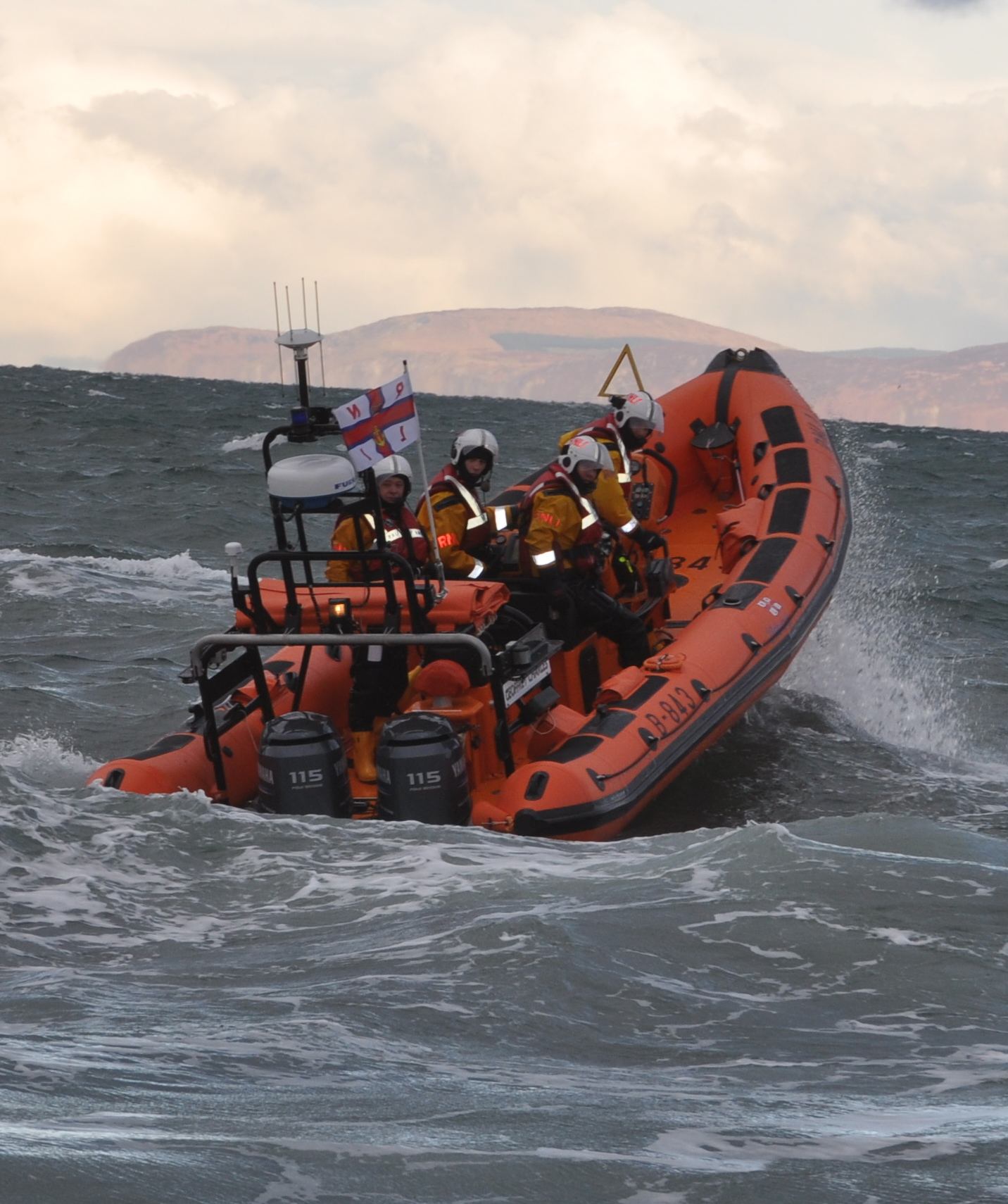
Red Bay RNLI Lifeboat searching near Ballycastle
Weather conditions for the search were difficult with strong gusty winds.
Nothing was found in the operation, which lasted several hours.
The search continues throughout the Ballycastle area.
New Passenger-Only Ferry for Northern Ireland-Scotland Route
Plans to operate the first passenger-only ferry service between Northern Ireland and Scotland are scheduled to start in late May, writes Jehan Ashmore.
Kintyre Express is to operate a Ballycastle-Campbeltown service on Fridays, Saturdays and Sundays between 27 May and 26 September. Three daily return trips are scheduled on the service though the 1200hrs sailing from Campeltown and the corresponding 1400hrs sailing from Ballycastle will only operate on customer demand.
The passage time is scheduled to take approximately 1 hour 30 minutes between County Antrim and the Mull of Kintyre which is a distance of some 50 kilometres / 30-miles. Ticket fares for a single journey are £30 and the return is £55. On the remaining days that the route is not operated on, the boat is available for private charter.
In addition the new venture is to include an on-demand Campbeltown-Troon route running between April and September. This second service, linking Argyll with Ayrshire, will operate on Sundays, Wednesdays and Fridays. The journey time is somewhat shorter with a scheduled time of 1 hour 15 minutes. The on-demand service must be booked in advance with singles fares costing £50 and a return ticket at £80. For further information click www.kintyreexpress.com
Like the recent proposals announced for a passenger-only ferry service across Galway Bay click here, the Kintyre Express operation will also use a fast-ferry in the form of rigid inflatable boats (RIB). The two routes from Campeltown will be served by Redbay Stormforce 11 metre RIBS which have centrally heated fully enclosed cabins for about 10 passengers. The Redbay Boats are built in Cushendall, Co. Antrim, for further information about the type of RIB to be used on the new routes click here.
The Ballycastle-Campbeltown route will be unique in that it will be the sole passenger-only ferry operator serving between the island of Ireland and the UK.
When the second route opens between Campbeltown-Troon, the company will be able to provide their boat service linked in with a train journey to Glasgow which they claim can be completed in less than two hours. Trains between Troon and Glasgow Central Station operate every 30 minutes and with a journey time of approximately 40 minutes.
For those who are car-free and time-free, this most northerly of travel routes is arguably the most scenic way to travel between Northern Ireland and Scotland and will appeal also to the intrepid traveler.
On both ferry services bicycles are carried for free and currently there is a special offer with all ferry tickets that can also be used for a free-day pass on the local Kintyre bus network for up to 24-hours. The bus operator is Craig of Campbeltown which trades as West Coast Motors and which owns Kintyre Express. The bus operator also serves on routes throughout Argyll and the island of Bute.
The next nearest cross-channel operator to the Kintyre Express Ballycastle-Campbeltown service is the car-carrying catamaran fast-ferry seasonal service between Larne and Troon operated by P&O (Irish Sea). The same company operates the year-round conventional car-ferry service on the North Channel between Larne and Cairnryan. Also operating to Loch Ryan is Stena Line which operates both ferry and HSS fast-craft services on the Belfast-Stranraer route.
Over the years there have been several attempts to revive the ferry between Ballycastle and Campeltown following a service that catered for vehicles too. For three summer seasons starting in 1997 the service was operated by the Argyll and Antrim Steam Packet Company, using the Claymore (1978/1,632grt) which could accommodate 500 passengers and 50 vehicles.
In 1996 the vessel was chartered to carry out tender duties for visitors and crew of the aircraft-carrier USS John F. Kennedy (displacement 82,655 tons full load) which was at anchor off Dun Laoghaire Harbour.


























